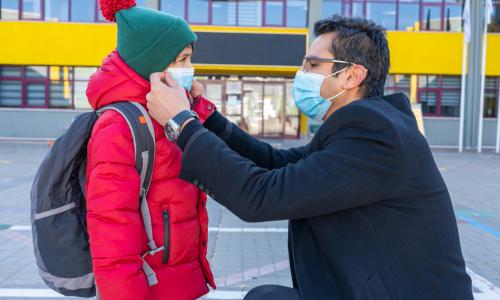As schools navigate the impacts of the Omicron variant this winter, it's critical to ensure that all planning and decision-making includes multilingual families and English language learners (ELLs).
Here are some lessons learned about how to partner effectively with multilingual families during COVID-19 that can help inform schools' response to Omicron and other variants or surges. For additional ideas, be sure to connect with your ELL/ESOL teams at the school or district level in order to draw upon their expertise and experience.
Classroom connections
For ideas related to instruction, see:
- Twelve Things Teachers Can Do to Support ELL Success in the New Year
- Teaching ELLs Online: How to Develop Students' Language Skills
Communicating with Families in Their Home Languages
All families have a legal right to receive communication in their home language from the school. Many schools have tried new ways of communicating with multilingual families during COVID-19.
For some effective strategies and tools in communicating with multilingual families, take a look at the following articles:
- Communicating with ELL Families: 10 Strategies for Schools
- How to Use Technology to Engage Multilingual Families
- Equity Through Language Access: Best Practices for Collaborating with Interpreters
- Successfully Communicating with Multilingual Families (Colorín Colorado blog post for the National Association of Secondary School Principals)
Essential Information for Families
Given how fluid the current situation is, families will need updated information about the following:
School operations
- School schedules and closures
- Changes in transportation services
- Updates on school meals
Health and safety
- Updated COVID-19 information related to new variants and safety protocols, especially those that are new (such as "test-to-stay" measures)
- How to access testing and COVID-19 vaccines for all age groups
- How to access any support services related to hardships that families might be facing, such as food, housing, medical care, winter clothing, heating assistance, etc.
Instruction
- How learning is being delivered
- How to access technology and internet service if schools switch to remote or hybrid instruction (keeping mind that families may not have access to the devices or service they had last year during remote learning)
Social-emotional supports
- What kinds of supports are available for students through the school
- How students are receiving social-emotional instruction at school








Add new comment